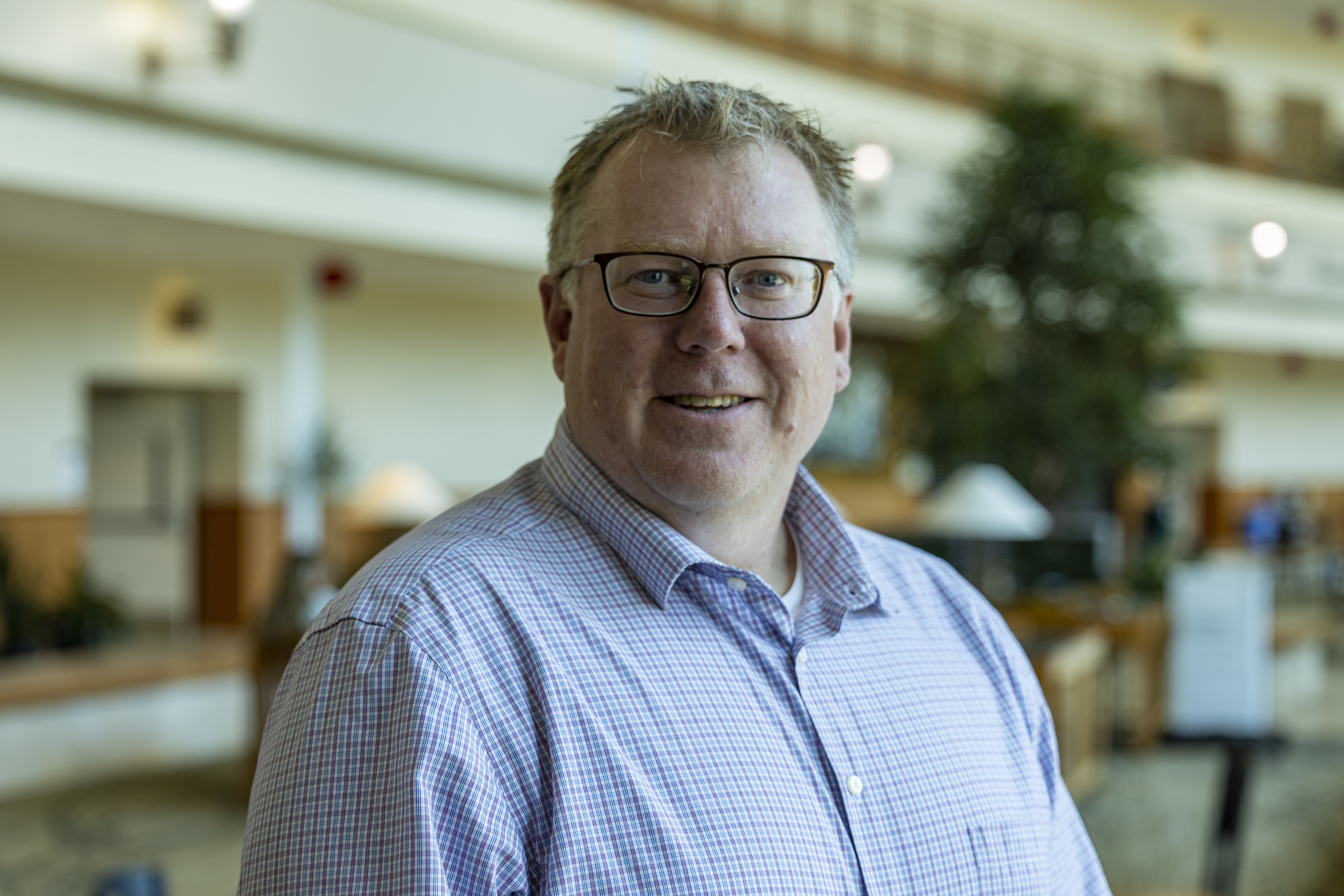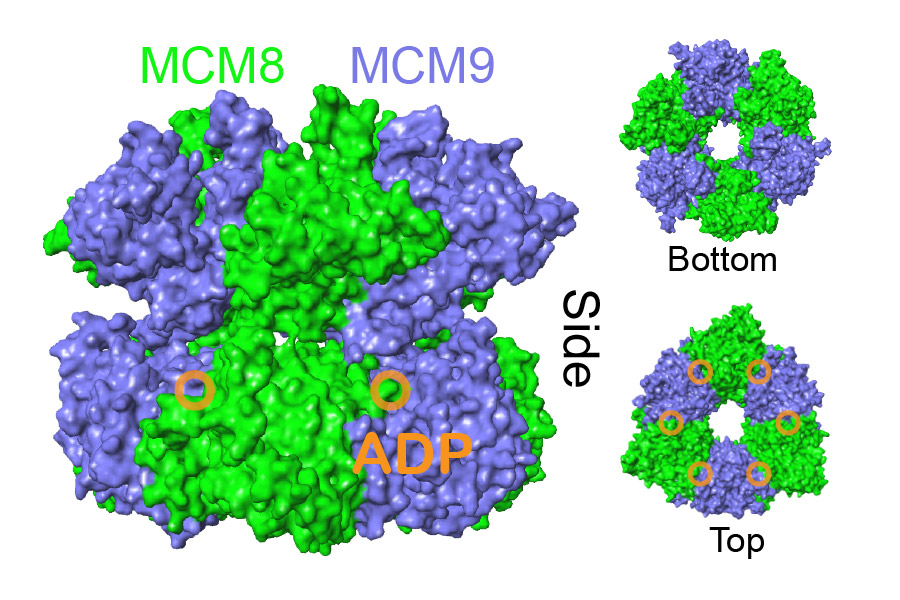Baylor Biochemist Unravels the Secrets of a Novel DNA Enzyme Linked to Infertility and Certain Cancers
Michael A. Trakselis, Ph.D., professor and director of graduate affairs for the Department of Chemistry and Biochemistry had to overcome 2 barriers to conduct his groundbreaking research on DNA enzyme.

Michael A. Trakselis, Ph.D., professor and director of graduate affairs for the Department of Chemistry and Biochemistry
Contact: Kelly Craine, Baylor University Media & Public Relations, 254-297-9065
Follow us on Twitter: @BaylorUMedia
WACO, Texas (August 28 , 2023) – Scientific research requires patience. The rewards are not always immediate, and the technology needed does not always exist. Michael A. Trakselis, Ph.D., professor and director of graduate affairs for the Department of Chemistry and Biochemistry at Baylor University, understands this.
For 15 years, Trakselis has been interested in the MCM8/9 enzyme. Part of the minichromosome maintenance protein (MCM) family, MCM8/9 is directly linked to ovarian insufficiency, infertility and cancers including ovarian, testicular and colon cancers, yet little is known about how this enzyme works and its connection to disease. There was no understanding of the relationship between the structure and function of the enzyme.
The research – Activity, substrate preference, and structure of HsMCM8/9 helicase – was published in the scientific journal Nucleic Acids Research. With this new information, researchers in the Trakselis Laboratory and elsewhere have a roadmap to better understand the function of this enzyme complex and how mutations may be connected to disease.
“Mutations in MCM8 or MCM9 can cause infertility and cancer; yet, we don’t know why we get certain diseases when there are mutations in this protein,” Trakselis said. “Having the structure might help us figure out some of that.”
Before that could happen, Trakselis had to overcome two barriers: technology and a stable protein solution needed to conduct the research.
Until recently, the technology needed to understand MCM8/9 was not readily available. The Single-particle cryo-Transmission Electron Microscope (cryo-EM) is a highly sensitive and expensive microscope that has only been available for use for about eight years.
“It’s a massive instrument, but it works to image really tiny things,” Trakselis said.
The cryo-EM helps visualize and solve what the structure looks like by shooting electron beams into the material. “Based on how the beams are reflected or refracted, you can start to build a structure.”
On this research, collaborating with researchers from Rice University and the University of Texas Health Science System in Houston, Dr. Trakselis was able access a cryo-EM. (NOTE: Baylor University debuted its new multimillion-dollar transmission electron microscope Aug. 29 in the Center for Microscopy and Imaging, a central laboratory located in the Baylor Sciences Building (BSB). This state-of-the-art flagship microscope is one of a kind in its field, with the capability to magnify objects several million times and image cell membranes, proteins and even atoms.)
The next barrier was creating a stable and pure protein solution. An impure or unstable sample would prevent the cryo-EM from revealing any precise structural information on the MCM8/9 complex. Trakselis and his team tried several approaches to expressing and purifying various constructs of MCM8/9, but they were of low purity and solubility. After much trial and error, the team ultimately tried insect cells for expression of this human protein, which finally resulted in stable pure protein that allowed cryo-EM imaging of the MCM8/9 complex.
With the barriers removed, Trakselis and his team were able to unravel the structure of MCM8/9 bound to its substrate product, ADP.
For Trakselis this is only the beginning. There are more questions to be answered.
“We described the basic structure-function relationship, but we don't know what it does in the cellular level and in what context,” Trakselis said.
FUNDING
This work was supported by Baylor University; the National Institutes of Health [GM13791 to M.A.T.]; Cancer Prevention & Research Institute of Texas (CPRIT) Award [RR190046 to Y.G.]; and American Cancer Society Research Scholar award [RSG-22-082-01-DMC to Y.G.]. Funding for open access charge: Baylor University.
ABOUT THE AUTHORS
Michael A. Trakselis, Ph.D., is professor and director of graduate affairs for the Department of Chemistry and Biochemistry at Baylor University. The Trakselis Laboratory focuses on understanding the molecular mechanism of DNA replication and repair and exploiting this knowledge for cancer therapeutics, biotechnology and nanoscale applications.
David R. McKinzey, Ph.D., received his Ph.D. in biochemistry from Baylor University on May 2023, after serving as a doctoral student at the Trakselis Laboratory.
Chuxuan Li is a postdoctoral research associate with Department of Biosciences at Rice University.
Yang Gao, Ph.D., is an assistant professor of biosciences and CPRIT Scholar in Cancer Research at Rice University.
ABOUT BAYLOR UNIVERSITY
Baylor University is a private Christian University and a nationally ranked Research 1 institution. The University provides a vibrant campus community for more than 20,000 students by blending interdisciplinary research with an international reputation for educational excellence and a faculty commitment to teaching and scholarship. Chartered in 1845 by the Republic of Texas through the efforts of Baptist pioneers, Baylor is the oldest continually operating University in Texas. Located in Waco, Baylor welcomes students from all 50 states and more than 90 countries to study a broad range of degrees among its 12 nationally recognized academic divisions.
ABOUT THE COLLEGE OF ARTS & SCIENCES AT BAYLOR UNIVERSITY
The College of Arts & Sciences is Baylor University’s largest academic division, consisting of 25 academic departments in the sciences, humanities, fine arts and social sciences, as well as 11 academic centers and institutes. The more than 5,000 courses taught in the College span topics from art and theatre to religion, philosophy, sociology and the natural sciences. The College’s undergraduate Unified Core Curriculum, which routinely receives top grades in national assessments, emphasizes a liberal education characterized by critical thinking, communication, civic engagement and Christian commitment. Arts & Sciences faculty conduct research around the world, and research on the undergraduate and graduate level is prevalent throughout all disciplines. Visit the College of Arts & Sciences website.
